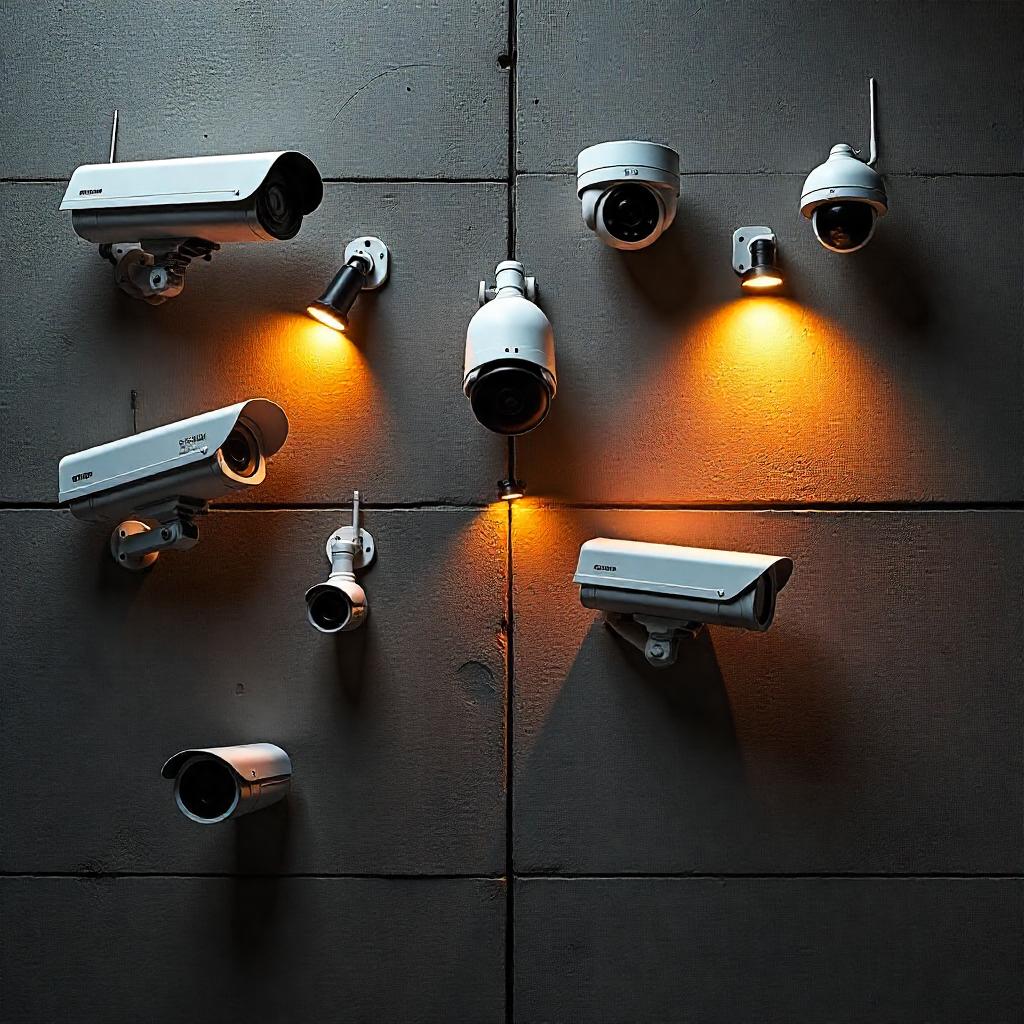When it comes to securing your home, office, or commercial space, choosing the right type of CCTV camera is crucial. Each camera is designed with a specific use in mind—whether it’s monitoring a wide outdoor area, keeping an eye on the entry gate, or capturing activity inside a store. In this article, we break down the most common types of CCTV cameras, how they work, and where they are best used.
1. Dome Cameras
Best for: Indoor surveillance, retail shops, hotels, and reception areas.
Overview:
Dome cameras are named for their dome-shaped casing, which makes it difficult to tell which direction the lens is pointing. This adds a layer of deterrence, as intruders can’t easily evade the field of view.
Mechanism:
They generally offer a fixed or wide-angle view and can be equipped with infrared night vision, motion detection, and HD resolution for clear footage. Some models also include vandal-resistant features for public settings.
Why Choose:
✔ Discreet
✔ Wide-angle coverage
✔ Tamper-resistant
2. Bullet Cameras
Best for: Outdoor surveillance, parking areas, building exteriors, farmhouses.
Overview:
These are long and cylindrical cameras that are highly visible, acting as a strong visual deterrent. Bullet cameras are often weatherproof and built for long-distance viewing, making them perfect for outdoor security.
Mechanism:
They use a fixed or varifocal lens and often come with high-resolution sensors, night vision, and IR LEDs for nighttime monitoring. They are usually mounted on walls or ceilings and pointed in a fixed direction.
Why Choose:
✔ Long-range visibility
✔ Weatherproof casing
✔ Great for outdoor use
3. PTZ Cameras (Pan-Tilt-Zoom)
Best for: Large commercial spaces, malls, warehouses, event venues.
Overview:
PTZ cameras can rotate left-right (pan), move up-down (tilt), and zoom in/out, either manually or automatically. These are powerful cameras ideal for monitoring wide areas that require frequent direction changes.
Mechanism:
Controlled remotely or set on patrol mode, PTZ cameras allow operators to focus on specific areas and track movement in real-time. Many come with auto-tracking and zoom-in-on-motion features.
Why Choose:
✔ Dynamic coverage
✔ Remote operation
✔ Zoom in on details (like license plates)
4. IP Cameras (Internet Protocol Cameras)
Best for: Homes, smart offices, remote monitoring, small businesses.
Overview:
IP cameras use the internet to transmit video footage to a network video recorder (NVR) or cloud storage. They’re easy to scale, making them ideal for multi-location surveillance.
Mechanism:
IP cameras offer HD or 4K resolution, audio integration, cloud backup, and mobile access. They connect via Ethernet or Wi-Fi and are known for smart features like motion alerts, facial recognition, and mobile notifications.
Why Choose:
✔ High-definition quality
✔ Remote monitoring via smartphone
✔ Smart analytics features
5. Wireless CCTV Cameras
Best for: Temporary setups, rental homes, internal surveillance.
Overview:
Wireless cameras do not require physical cabling between the camera and the storage device. They are easy to install and move, which makes them perfect for DIY security systems.
Mechanism:
These cameras use Wi-Fi to transmit video, often to a mobile app or NVR. Battery-powered options are also available. However, they may require a strong internet connection for stable performance.
Why Choose:
✔ Easy installation
✔ Flexible placement
✔ Portable and compact
6. C-Mount Cameras
Best for: Industrial sites, logistics hubs, road traffic monitoring.
Overview:
C-Mount cameras come with detachable lenses, allowing you to change lenses for different viewing distances. These cameras are best used where you need to monitor extremely long distances.
Mechanism:
Using specialized lenses, C-Mount cameras can capture detailed footage even over 40 feet away. They are often bulky, but highly adaptable.
Why Choose:
✔ Interchangeable lenses
✔ Suitable for extreme weather
✔ Long-range surveillance
7. Thermal (Infrared) Cameras
Best for: High-security zones, border monitoring, night surveillance.
Overview:
These cameras detect heat signatures instead of visible light, allowing them to work even in total darkness. Thermal cameras are used in military, rescue operations, and high-end surveillance systems.
Mechanism:
They work by detecting infrared radiation and converting it into a visual image. They can spot intruders hiding in bushes or shadows where regular cameras would fail.
Why Choose:
✔ Works in complete darkness
✔ Detects hidden movement
✔ Ideal for critical security
Choosing the Right Camera for Your Needs
| Location | Recommended Camera Type |
| Home (Indoor) | Dome, IP, Wireless |
| Home (Outdoor) | Bullet, IP, PTZ |
| Shop or Office | Dome, IP |
| Warehouse/Factory | PTZ, C-Mount, Bullet |
| Parking Lot | Bullet, PTZ |
| High-Security Areas | PTZ, Thermal |

